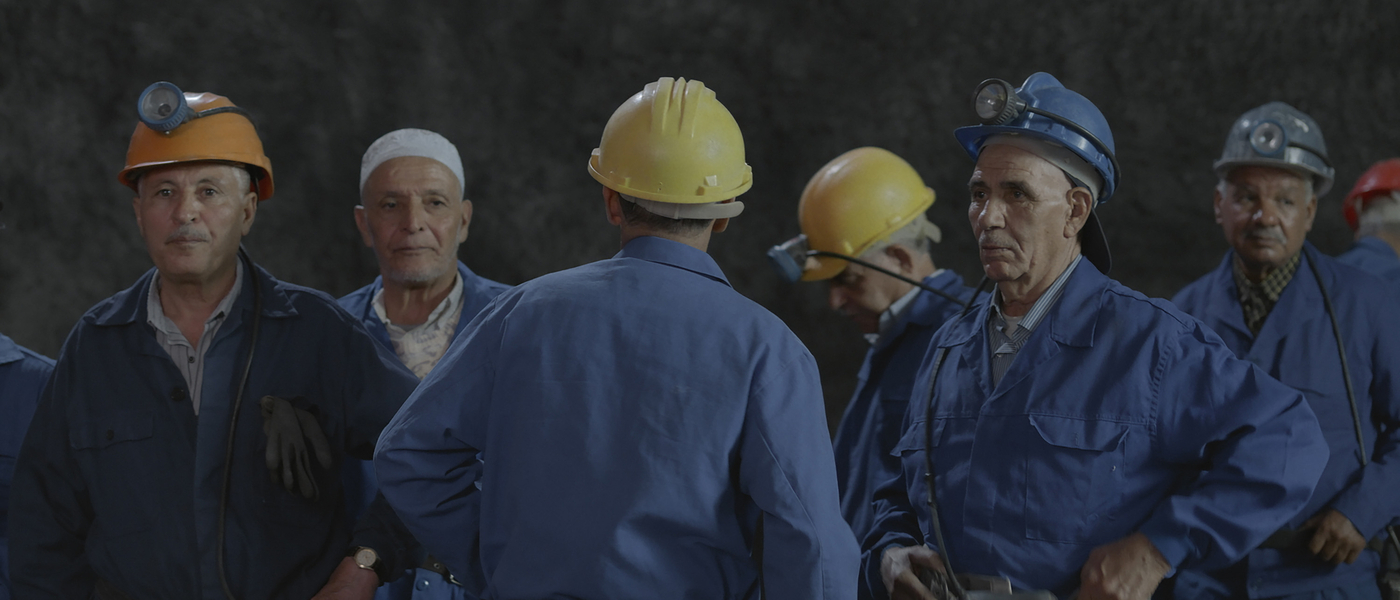Interview with Randa Maroufi, L'mina director
by Grégory Coutaut

by Grégory Coutaut
What happened in the Jerada coal mine that so infuriated the locals? Wishing to unearth “a still living memory”, Moroccan filmmaker Randa Maroufi invites the audience to delve into a polyphonic documentary opus as if sinking mysteriously into the earth’s core. With its often startling images and its unpredictable stylistic shifts, L’Mina at times evokes a session of individual hypnosis, but its deeper political ambition remains is to rally towards collective upheaval.
Interview with Randa Maroufi
A contemporary political work
We live in a particularly hypocritical and relatively terrifying era when it comes to human dignity. A large part of liberal societies is rediscovering (or pretending to rediscover) that Capital pays itself on the back of the beast in man. With L’Mina, I wanted to bear witness to a contemporary social reality: a working-class group takes action in the midst of our current crisis. If my steps lead me to the city of Jerada, it was certainly not to compose a miserable or complacent dirge in tribute to the courage of Moroccan workers. I also wanted to steer away from the trap of aestheticising, and avoid having form take over substance, the reality and issues the film seeks to convey. I constantly asked myself how to make form embrace substance without one stifling the other, and without establishing a hierarchy between the perspective and what we see.
A collective creation
From the earliest stages of writing, the project was built in close connection with the people we met in Jerada. Without their cooperation, the film would have never been what it is today. The writing process was nourished by the constant interactions and deep conversations about how to tell, to show, or to keep silent certain things. This collective endeavour lies at the very heart of the film. Most characters play their own roles, thus contributing to the creation of this piece of fiction.
Different kinds of images
The complexity of the story of Jerada cannot be confined to a single visual register. The 3D-scan images refer to forensic architecture techniques, as well as control and surveillance tools. These references fit perfectly with my approach, as I often use official tools to tell informal stories. Super 8 footage brings an intimate, familial quality. It allowed me to explore the younger generation’s relationship with the mine, while resonating with a more personal story.
Reconstructing the inside of the mine
It was absolutely out of the question to shoot in a real pit and risk endangering anyone. This refusal guided our choice in production design. While speaking with young miners from my adoptive family in Jarada, we would recreate together, in the living room, the work carried out deep in the pit using mattresses and cushions. I followed their stories, breathless. I wanted the camera to reproduce that impetus, to literally embody it through the way it moves, frames, breathes almost. Together with the production design team, we reconstructed a pit and a gallery. Each sequence was filmed individually, like fragments of a whole, which we later assembled in post-production - much like stitching a fabric together. The film keeps in with my previous works, embracing a form of staging directly inspired by reality, without seeking a faithfull, complete reconstruction.